 W
WMilitary aviation comprises military aircraft and other flying machines for the purposes of conducting or enabling aerial warfare, including national airlift capacity to provide logistical supply to forces stationed in a war theater or along a front. Airpower includes the national means of conducting such warfare, including the intersection of transport and warcraft. Military aircraft include bombers, fighters, transports, trainer aircraft, and reconnaissance aircraft.
 W
WAir Combat Maneuvering Instrumentation (ACMI) systems record an aircraft's in-flight data. They are often used by the military for aerial combat training and analysis.
 W
WAir combat maneuvering is the tactical art of moving, turning and/or situating one's fighter aircraft in order to attain a position from which an attack can be made on another aircraft. Air combat manoeuvres rely on offensive and defensive basic fighter manoeuvring (BFM) to gain an advantage over an aerial opponent.
 W
WAn airborne early warning and control (AEW&C) system is an airborne radar picket system designed to detect aircraft, ships and vehicles at long ranges and perform command and control of the battlespace in an air engagement by directing fighter and attack aircraft strikes. AEW&C units are also used to carry out surveillance, including over ground targets and frequently perform C2BM functions similar to an Air Traffic Controller given military command over other forces. When used at altitude, the radar on the aircraft allows the operators to detect and track targets and distinguish between friendly and hostile aircraft much farther away than a similar ground-based radar. Like a ground-based radar, it can be detected by opposing forces, but because of its mobility and extended sensor range, it is much less vulnerable to counter-attacks.
 W
WAn aircrew flying badge is the badge worn on the left breast, above any medal ribbons, by qualified aircrew in the Royal Air Force, Royal Navy, British Army, Indian Air Force, Pakistan Air Force, Royal Canadian Air Force, Royal Australian Navy, Australian Army, Royal Australian Air Force, Royal New Zealand Air Force, South African Air Force and Sri Lanka Air Force. An example of a real Pilot Brevet is as opposite:
 W
WAnti-aircraft warfare or counter-air defence is the battlespace response to aerial warfare, defined by NATO as "all measures designed to nullify or reduce the effectiveness of hostile air action". It includes surface based, subsurface, and air-based weapon systems, associated sensor systems, command and control arrangements, and passive measures. It may be used to protect naval, ground, and air forces in any location. However, for most countries the main effort has tended to be homeland defence. NATO refers to airborne air defence counter-air and naval air defence as anti-aircraft warfare. Missile defence is an extension of air defence, as are initiatives to adapt air defence to the task of intercepting any projectile in flight.
 W
WThe Astral Crown is a gold crown surmounted with eight low points. The centrals and laterals points are topped with a star, with an unspecified number of points, between two wings.
 W
WBas 60 was an air base system developed and used by the Swedish Air Force during the Cold War. The system was based around defensive force dispersal of aircraft and its supporting ground operations across many krigsflygbaser in case of war, primarily as a protective measure against nuclear weapons. The purpose of the system was to make it complicated for an opponent to destroy the Swedish Air Force on the ground and thus ensure endurance for the air force in a conflict scenario. The plan was to disperse the air units so one krigsflygbas would house one squadron. This dispersion principle also applied to the individual wartime bases themselves, meaning that the various functions of an air base were spread over a large area in and around the base.
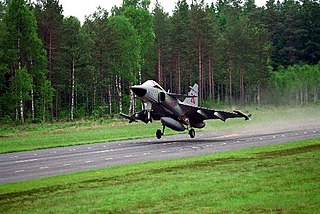 W
WBas 90 was an air base system used by the Swedish Air Force during the Cold War. Bas 90 was developed during the 1970s and 1980s from the existing Bas 60 system in response to the new threats and needs that had arisen since the conception of the Bas 60 system during the 1950s. Like its predecessor, the Bas 90 system was based around defensive force dispersal of aircraft across many krigsflygbaser in case of war, as well as dispersion of the air base functions within the individual bases themselves. The air units would have been dispersed so one squadron would be stationed per krigsflygbas. The system was a protective measure against nuclear weapons and airstrikes, the purpose being to make it complicated for an opponent to destroy the Swedish Air Force on the ground and thus ensure endurance for the air force in a conflict scenario.
 W
WAn air base is an aerodrome used as a military base by a military force for the operation of military aircraft.
 W
WBasic fighter maneuvers (BFM) are tactical movements performed by fighter aircraft during air combat maneuvering, to gain a positional advantage over the opponent. BFM combines the fundamentals of aerodynamic flight and the geometry of pursuit, with the physics of managing the aircraft's energy-to-weight ratio, called its specific energy.
 W
WA blood chit is a notice carried by military personnel and addressed to any civilians who may come across an armed-services member – such as a shot-down pilot – in difficulties. As well as identifying the force to which the bearer belongs as friendly, the notice displays a message requesting that the service member be rendered every assistance.
 W
WA buzz number was a large letter and number combination applied to United States Air Force military aircraft in the years immediately after World War II, through the early 1960s. They were applied for general aerial identification of aircraft, but particularly for the identification of aircraft guilty of "buzzing" over populated areas.
 W
WThe CAF Airpower Museum, formerly the American Airpower Heritage Museum (AAHM), is affiliate organization of the Commemorative Air Force (CAF), headquartered at Dallas Executive Airport in Dallas, Texas. The museum opened in its first building in Mercedes, Texas, in 1965 as a location to house and display World War II artifacts as they began to be donated to the CAF. Both the CAF and AAHM moved to Harlingen, Texas, in 1968. In 1990, the AAHM became a separate non-profit organization, and in 1991 both the AAHM and CAF moved to Midland, Texas. In 2015, the museum's collection was moved to Dallas in anticipation of the creation of the new CAF National Airbase.
 W
WCarrier onboard delivery (COD) is the use of aircraft to ferry personnel, mail, supplies, and high-priority cargo, such as replacement parts, from shore bases to an aircraft carrier at sea. Several types of aircraft, including helicopters, have been used by navies in the COD role. The Grumman C-2 Greyhound has been the United States Navy's primary COD aircraft since the mid-1960s.
 W
WThe IAI EL/W-2090 is an airborne early warning and control (AEW&C) radar system developed by Israel Aerospace Industries (IAI) and Elta Electronics Industries of Israel. Its primary objective is to provide intelligence to maintain air superiority and conduct surveillance. The system is currently in-service with the Indian Air Force.
 W
WA fin flash is part of the national markings of the military aircraft of a number of countries.
 W
WThe finger-four formation is a flight formation used by fighter aircraft. It consists of four aircraft, and four of these formations can be combined into a squadron formation.
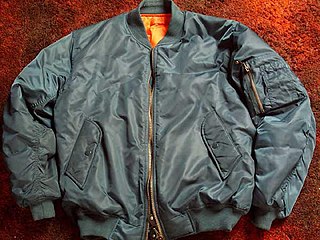 W
WA flight jacket is a casual jacket that was originally created for pilots and eventually became part of popular culture and apparel. It has evolved into various styles and silhouettes, including the "letterman" jacket and the fashionable "bomber" jacket that is known today.
 W
WThe Foster mounting was a device fitted to some fighter aircraft of the Royal Flying Corps during the First World War. It was designed to enable a machine gun to fire over, rather than through the arc of the spinning propeller. It took several forms when applied to different aircraft types, but all shared the feature of a quadrant shaped I-beam rail on which the gun could slide back and down in one movement. The primary purpose was to facilitate the changing of spent ammunition drums, but some pilots also found that the mounting permitted the gun to be fired directly upward or at an angle, permitting a fighter aircraft to attack an opponent from beneath.
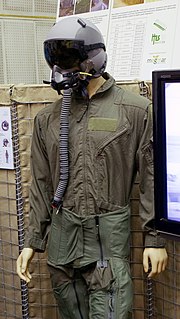 W
WA g-suit, or anti-g suit, is a flight suit worn by aviators and astronauts who are subject to high levels of acceleration force (g). It is designed to prevent a black-out and g-LOC caused by the blood pooling in the lower part of the body when under acceleration, thus depriving the brain of blood. Black-out and g-LOC have caused a number of fatal aircraft accidents.
 W
WUAV ground control station (GCS) is a land- or sea-based control centre that provides the facilities for human control of Unmanned Aerial Vehicles. It may also refer to a system for controlling rockets within or above the atmosphere, but this is typically described as a Mission Control Centre.
 W
WIcelandic Air Policing is a NATO operation conducted to patrol Iceland's airspace. As Iceland does not have an air force, in 2006 it requested that its NATO allies periodically deploy fighter aircraft to Keflavik Air Base to provide protection of its airspace. The first deployment of aircraft took place in May 2008.
 W
WAn infrared search and track (IRST) system is a method for detecting and tracking objects which give off infrared radiation such as jet aircraft and helicopters.
 W
WInvasion stripes were alternating black and white bands painted on the fuselages and wings of Allied aircraft during World War II to reduce the chance that they would be attacked by friendly forces during and after the Normandy Landings. Three white and two black bands were wrapped around the rear of a fuselage just in front of the empennage (tail) and from front to back around the upper and lower wing surfaces.
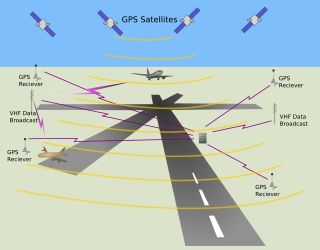 W
WThe joint precision approach and landing system (JPALS) is a ship's system, all-weather landing system based on real-time differential correction of the Global Positioning System (GPS) signal, augmented with a local area correction message, and transmitted to the user via secure means. The onboard receiver compares the current GPS-derived position with the local correction signal, deriving a highly accurate three-dimensional position capable of being used for all-weather approaches via an Instrument Landing System-style display. While JPALS is similar to Local Area Augmentation System, but intended primarily for use by the military, some elements of JPALS may eventually see their way into civilian use to help protect high-value civilian operations against unauthorized signal alteration.
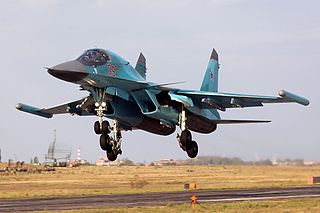 W
WKhibiny (L-175V) (Хибины) (Л-175В) is Soviet / Russian aircraft electronic countermeasures (ECM) system. The name refers to Khibiny Mountains.
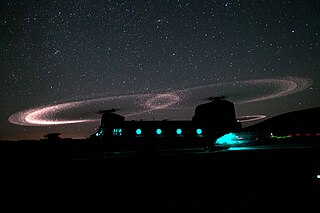 W
WThe Kopp–Etchells effect is a sparkling ring or disk that is sometimes produced by rotary-wing aircraft when operating in desert conditions, particularly near the ground at night. The name was coined by photographer Michael Yon to honor two soldiers who were killed in combat; Benjamin Kopp, a US Army Ranger, and Joseph Etchells, a British soldier. Both were killed in combat in Sangin, Afghanistan in July of 2009.
 W
WThe Leigh Light (L/L) was a British World War II era anti-submarine device used in the Battle of the Atlantic. It was a powerful carbon arc searchlight of 24 inches (610 mm) diameter fitted to a number of the British Royal Air Force's Coastal Command patrol bombers to help them spot surfaced German U-boats at night.
 W
WMilitary aircraft insignia are insignia applied to military aircraft to identify the nation or branch of military service to which the aircraft belongs. Many insignia are in the form of a circular roundel or modified roundel; other shapes such as stars, crosses, squares, or triangles are also used.
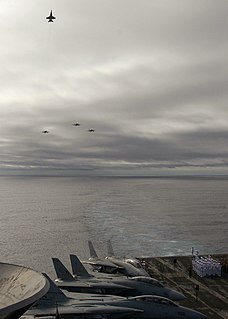 W
WThe missing man formation is an aerial salute performed as part of a flypast of aircraft at a funeral or memorial event, typically in memory of a fallen pilot, a well-known military service member or veteran, or a well-known political figure. The planes fly in a formation with a space where one plane should be, symbolizing the person's absence.
 W
WBasic fighter maneuvers (BFM) are tactical movements performed by fighter aircraft during air combat maneuvering, to gain a positional advantage over the opponent. BFM combines the fundamentals of aerodynamic flight and the geometry of pursuit, with the physics of managing the aircraft's energy-to-weight ratio, called its specific energy.
 W
WRommel's asparagus were 4-to-5-metre logs which the Axis placed in the fields and meadows of Normandy to cause damage to the expected invasion of Allied military gliders and paratroopers. Also known in German as Holzpfähle, the wooden defenders were placed in early 1944 in coastal areas of France and the Netherlands against airlanding infantry. Rommelspargel took their name from Field Marshal Erwin Rommel, who ordered their design and usage; Rommel himself called the defensive concept Luftlandehindernis.
 W
WA Sector clock or colour change clock was a round colour-coded clock used at military airfields and observation posts in the United Kingdom to help track the movements of enemy aircraft and control friendly aircraft.
 W
WA self-sealing fuel tank is a type of fuel tank, typically used in aircraft fuel tanks or fuel bladders, that prevents them from leaking fuel and igniting after being damaged.
 W
WSilverplate was the code reference for the United States Army Air Forces' participation in the Manhattan Project during World War II. Originally the name for the aircraft modification project which enabled a B-29 Superfortress bomber to drop an atomic weapon, "Silverplate" eventually came to identify the training and operational aspects of the program as well. The original directive for the project had as its subject line "Silver Plated Project" but continued usage of the term shortened it to "Silverplate".
 W
WSpecial use airspace (SUA) is an area designated for operations of a nature such that limitations may be imposed on aircraft not participating in those operations. Often these operations are of a military nature. The designation of SUAs identifies for other users the areas where such activity occurs, provides for segregation of that activity from other users, and allows charting to keep airspace users informed of potential hazards. Most SUAs are depicted on aeronautical charts and FAA maintains a page showing the current status of most SUAs.
 W
WA synchronization gear was a device used by a single-engine tractor configuration aircraft to fire its forward-firing armament through the arc of its spinning propeller without bullets striking the blades. This allowed the aircraft, rather than the gun, to be aimed at the target.
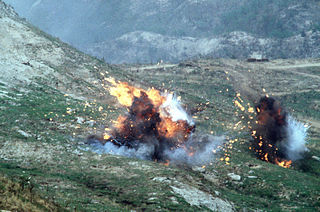 W
WTactical bombing is aerial bombing aimed at targets of immediate military value, such as combatants, military installations, or military equipment. This is in contrast to strategic bombing, or attacking enemy cities and factories to cripple future military production and enemy civilians' will to support the war effort, to debilitate the enemy's long-term capacity to wage war. The term "tactical bomber" only refers to a bomber aircraft designed specifically for the primary role of tactical bombing, even though many other types of aircraft ranging from strategic bombers to fighters, interceptors, and helicopters have been used in tactical bombing operations.
 W
WA target tug is an aircraft which tows an unmanned drone, a fabric drogue or other kind of target, for the purposes of gun or missile target practice. Target tugs are often conversions of transport and utility aircraft, as well as obsolescent combat types. Some, such as the Miles Martinet, were specially designed for the role. It was, and is, a relatively hazardous job, as live fire is typically employed and the people doing the shooting are usually still in training.
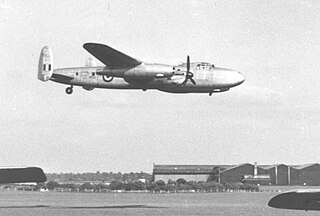 W
WA testbed aircraft is an aeroplane, helicopter or other kind of aircraft intended for flight research or testing the aircraft concepts or on-board equipment. These could be specially designed or modified from serial production aircraft.
 W
WVertical replenishment, or VERTREP is a method of supply of seaborne vessels by helicopter. The United States Department of Defense defines VERTREP as:...the transfer of cargo between ships using helicopters. VERTREP is often used to supplement connected replenishment. Weapons loads, generally limited to 1,800 kg, are transferred from the supply ship to the flight deck of the amphibious ship. The decided advantage of a VERTREP is that it can effect replenishment without ship-to-ship connection.
 W
WA vol is a once-obscure heraldic symbol consisting of a pair of outstretched, usually plumed bird's wings, which are connected together at their shoulders without having any bird's body in the middle.